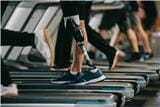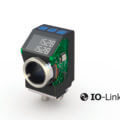While prosthetic legs enhance mobility for amputees, standard prostheses are passive, meaning that they are unable to provide the required feedback to enhance motor skills including balance. Now, microprocessors combined with miniature motion control technology are enabling dynamic prosthetic control, helping to emulate the human reflex loop and improve the wearer’s gait cycle.
For lower limb amputees, prosthetics can be an effective way of restabilising mobility. Modern prosthetic legs are manufactured from lightweight materials that enable easier walking, and for some, can even make activities like running possible. Despite these advances, most prosthetic legs do not allow their wearers to move with a medically accepted normal walking pattern, known as the gait cycle. This can present challenges for balance, especially when walking on uneven ground or gradients, as well as the ability to quickly respond to changes in speed or direction.
Active prosthetics emulating the gait cycle
Taking a standard gait cycle, communication runs from the brain to the spinal cord and then on to the nerves and muscles. Around 20 times a second, reflex loop messages between the muscles, nerves and brain interact to control the required motor skills. Standard prostheses are unable to replace this closed reflex loop, so passive prosthetic limbs give a less natural sensation for the user, typically resulting in less effective mobility.
Now, prosthetics have an active capacity that emulates the natural gait cycle more closely. Sensors placed in the knee and/or ankle are connected to a microprocessor embedded within the prosthetic leg. This creates a closed feedback loop with various conditional inputs used by the microprocessor to control integrated hydraulics that replace some of the human motor functions.
The result is a more natural and effective response. Wearers of active prosthetic legs have reported increased mobility, balance, and a more natural gait, as well as regaining other skills such as walking backwards.
Miniature DC motor technology
Active prosthetic legs rely on hydraulic dampers throughout the gait cycle. This includes the stance phase when the foot is in contact with the ground, as well as the swing phase when the leg follows through. Hydraulic control is required to optimise motion and balance, particularly through the swing phase where the prosthetic limb must be slowed in preparation to support weight and enable propulsion.
The microprocessor receives live data from high resolution angle and pressure sensors, using this information to command the hydraulic damping system. The system’s spring forces are actuated in real time thanks to high performance miniature DC motors.
To emulate the natural gait cycle as closely as possible, smooth control is imperative. As even minor elements of the jittery, cogging effect sometimes present in iron core motors would impede natural control, instead a coreless brushed DC motor with precious metal commutation is the optimum choice. A design such as Portescap’s 13N motor is capable of providing 3.3 mNm of smooth, continuous torque.
Design advantages for the real world
Light weight is also essential as excess affects prosthetic performance and makes wearing the device more tiring for the user. In addition, a small motor formfactor is required to integrate within the prosthetic and accommodate the adjoining gearbox. Used to control motor speed, a gearbox such as Portescap’s R13 planetary design is also combined with a magnetic encoder that provides data feedback for gait cycle control. With a diameter of 13mm, Portescap’s 13N motor is up to 30% smaller than other designs for the equivalent power density.


Power to the active prosthetic system is provided by an integrated battery, so for prolonged use, motor efficiency is key. Coreless brushed DC motors operate with a low current draw and remove the possibility of iron losses. Typically, the coreless brushed DC motor can endure a day’s use before recharge, such as the Portescap 13N that operates at 75% efficiency. Living with the prosthetic also means that motor operation has to be low noise, another advantage of the coreless brushed design with smooth bearing assembly.
Future development
As the active prosthetic limb enables its wearer to engage in activities using greater mobility, the device also has to be rugged. Coreless brushed DC motors operate across the required extremes of cold and heat and are sufficiently resilient to endure the shocks and vibrations of the most demanding environments. An active prosthetic limb can last for around 5,000 operational hours, equivalent to around two years.
As active technology enabling improved mobility for amputees is advancing, miniature motor manufacturers like Portescap are working with prosthetic developers to create customised solutions. Development in microprocessor technology, alongside miniature motion control systems, is helping create a more able world.








